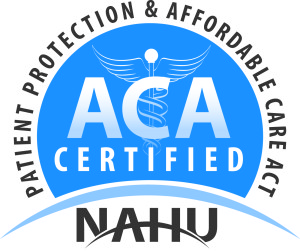WHAT ARE THE TYPES OF TERM INSURANCE POLICIES?
Term insurance comes in two basic varieties—level term and decreasing term. These days, almost everyone buys level term insurance. The terms “level” and “decreasing” refer to the death benefit amount during the term of the policy. A level term policy pays the same benefit amount if death occurs at any point during the term.
Common types of level term are:
- yearly- (or annually-) renewable term
- 5-year renewable term
- 10-year term
- 15-year term
- 20-year term
- 25-year term
- 30-year term
- term to a specified age (usually 65)
 Yearly renewable term, once popular, is no longer a top seller. The most popular type is now 20-year term. Most companies will not sell term insurance to an applicant for a term that ends past his or her 80th birthday.
Yearly renewable term, once popular, is no longer a top seller. The most popular type is now 20-year term. Most companies will not sell term insurance to an applicant for a term that ends past his or her 80th birthday.
If a policy is “renewable,” that means it continues in force for an additional term or terms, up to a specified age, even if the health of the insured (or other factors) would cause him or her to be rejected if he or she applied for a new life insurance policy.
Generally, the premium for the policy is based on the insured person’s age and health at the policy’s start, and the premium remains the same (level) for the length of the term. So, premiums for 5-year renewable term can be level for 5 years, then to a new rate reflecting the new age of the insured, and so on every five years. Some longer term policies will guarantee that the premium will not increase during the term; others don’t make that guarantee, enabling the insurance company to raise the rate during the policy’s term.
Some term policies are convertible. This means that the policy’s owner has the right to change it into a permanent type of life insurance without additional evidence of insurability.
“Return of Premium”
In most types of term insurance, including homeowners and auto insurance, if you haven’t had a claim under the policy by the time it expires, you get no refund of the premium. Your premium bought the protection that you had but didn’t need, and you’ve received fair value. Some term life insurance consumers have been unhappy at this outcome, so some insurers have created term life with a “return of premium” feature. The premiums for the insurance with this feature are often significantly higher than for policies without it, and they generally require that you keep the policy in force to its term or else you forfeit the return of premium benefit. Some policies will return the base premium but not the extra premium (for the return benefit), and others will return both.
WHAT ARE THE DIFFERENT TYPES OF PERMANENT POLICIES?
- Whole or ordinary life
This is the most common type of permanent insurance policy. It offers a death benefit along with a savings account. If you pick this type of life insurance policy, you are agreeing to pay a certain amount in premiums on a regular basis for a specific death benefit. The savings element would grow based on dividends the company pays to you.
- Universal or adjustable life
This type of policy offers you more flexibility than whole life insurance. You may be able to increase the death benefit, if you pass a medical examination. The savings vehicle (called a cash value account) generally earns a money market rate of interest. After money has accumulated in your account, you will also have the option of altering your premium payments – providing there is enough money in your account to cover the costs. This can be a useful feature if your economic situation has suddenly changed. However, you would need to keep in mind that if you stop or reduce your premiums and the saving accumulation gets used up, the policy might lapse and your life insurance coverage will end. You should check with your agent before deciding not to make premium payments for extended periods because you might not have enough cash value to pay the monthly charges to prevent a policy lapse.
- Variable life
This policy combines death protection with a savings account that you can invest in stocks, bonds and money market mutual funds. The value of your policy may grow more quickly, but you also have more risk. If your investments do not perform well, your cash value and death benefit may decrease. Some policies, however, guarantee that your death benefit will not fall below a minimum level.
- Variable-universal life
If you purchase this type of policy, you get the features of variable and universal life policies. You have the investment risks and rewards characteristic of variable life insurance, coupled with the ability to adjust your premiums and death benefit that is characteristic of universal life insurance.
WHY SHOULD I PURCHASE PERMANENT INSURANCE?
A permanent life policy provides lifelong insurance protection. The policy pays a death benefit if you die tomorrow or if you live to be a hundred. There is also a savings element that will grow on a tax-deferred basis and may become substantial over time. Because of the savings element, premiums are generally higher for permanent than for term insurance. However, the premium in a permanent policy remains the same, while term can go up substantially every time you renew it.
There are a number of different types of permanent insurance policies, such as whole (ordinary) life, universal life, variable life, and variable/universal life. In a permanent policy, the cash value is different from its face value amount. The face amount is the money that will be paid at death. Cash value is the amount of money available to you. There are a number of ways that you can use this cash savings. For instance, you can take a loan against it or you can surrender the policy before you die to collect the accumulated savings.
There are unique features to a permanent policy such as:
- You can lock in premiums when you purchase the policy. By purchasing a permanent policy, the premium will not increase as you age or if your health status changes.
- The policy will accumulate cash savings.
- Depending on the policy, you may be able to withdraw some of the money. You also may have these options:
- Use the cash value to pay premiums. If unexpected expenses occur, you can stop or reduce your premiums. The cash value in the policy can be used toward the premium payment to continue your current insurance protection – providing there is enough money accumulated.
- Borrow from the insurance company using the cash value in your life insurance as collateral. Like all loans, you will ultimately need to repay the insurer with interest. Otherwise, the policy may lapse or your beneficiaries will receive a reduced death benefit. However, unlike loans from most financial institutions, the loan is not dependent on credit checks or other restrictions.
Disclaimer
Data and information is provided for informational purposes only, and is not intended for any other commercial or non-commercial purposes. Neither David M. Kulawiak, Inc. nor any of its data or content providers shall be liable for any errors or delays in the content, or for any actions taken in reliance thereon. By accessing our web site, a user agrees not to redistribute the information found therein. We provide customized links to select companies for your convenience only. We do not endorse or recommend the services of any company. The company you select is solely responsible for its services to you, the user. We shall not be liable for any damages or costs of any type arising out of or in any way connected with your use of our services.




